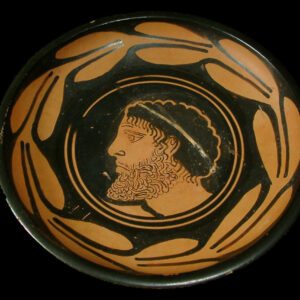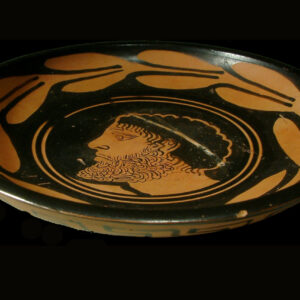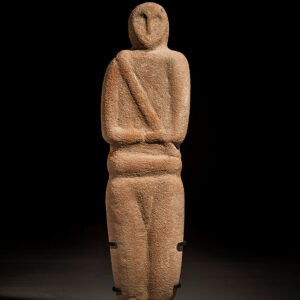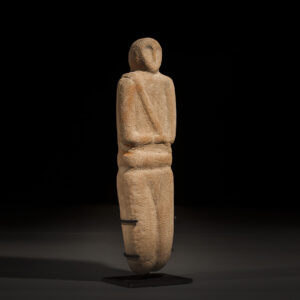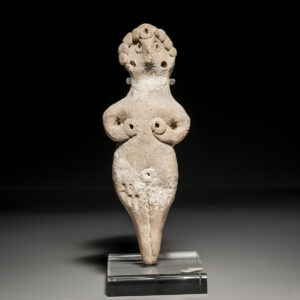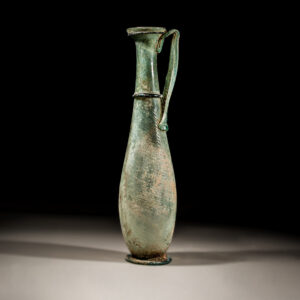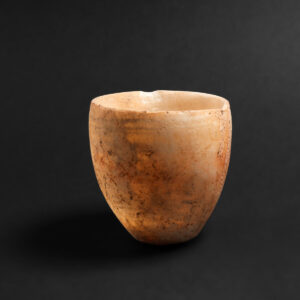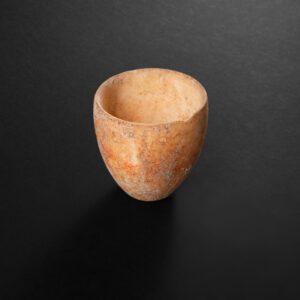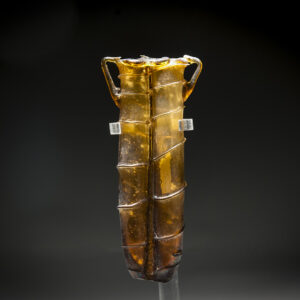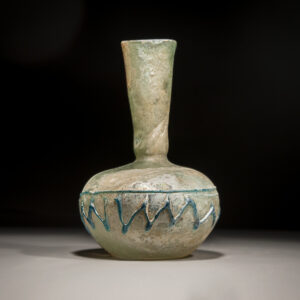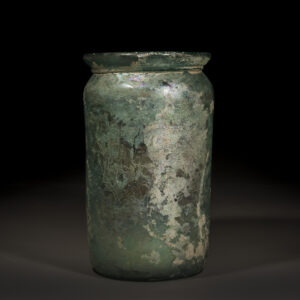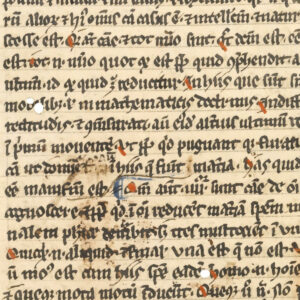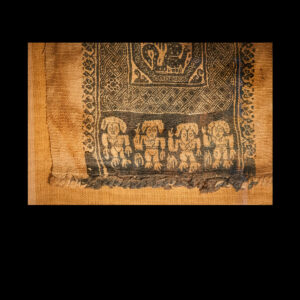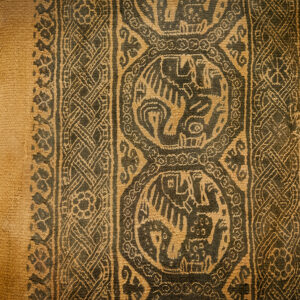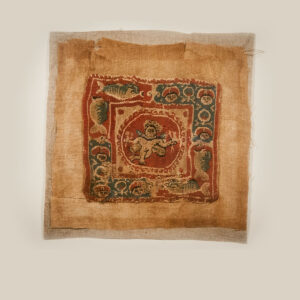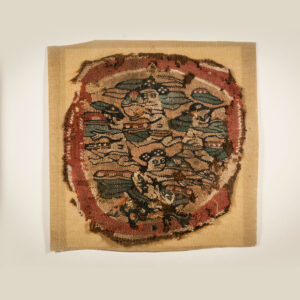Showing 177–189 of 189 results
Statuette of an Idol
Pink statuette of Sabaean idol with stylized representation for the eyes and nose set on an oval face. Rectangular body is marked by diagonal sash running along torso. Arms are folded at right angles from the shoulders, set above belted waist and smooth legs.
REFERENCE #
SI_SA_1015
CIVILIZATION
Sabaean, 3000 B.C.E. – 2000 B.C.E.
SIZE
H. 39 cm
CONDITION
Fine condition
PRICE
Sold
PROVENANCE
Former Swiss private collection, acquired ca. 1980.
Translucent Alabaster Cup
Alabaster cup from the Israelite kingdom period, dating to the time of King David, circa 1200–800 BC. This vessel has been carefully fashioned from fine, translucent alabaster, which remains in perfect condition, emphasizing the skill of its ancient maker. The cup measures approximately 6 cm in height and features a simple, elegant form with a rounded bowl and a narrow, slightly flared lip.
The use of alabaster, a soft stone prized for its translucence and smooth finish, suggests the object was valued and possibly used in ceremonial contexts. Both the interior and exterior surfaces have been polished to a glossy, refined texture, with no visible signs of damage or deterioration. Its translucent quality would have enhanced its visual appeal when held in light, creating a delicate play of shadow and glow.
Discovered in the Judean hills, this cup is linked to the material culture of early Israelite society during the Iron Age. Its form and material imply it may have played a role in rituals or religious offerings typical of the period, serving both practical and symbolic functions within domestic or religious settings. Objects of this nature are rare, providing valuable insight into the craftsmanship and spiritual practices of the ancient Israelites during the era of King David.
REFERENCE #
SW-CN-1019
CIVILIZATION
Mesopotamian, 1200 B.C.E. – 800 B.C.E.
SIZE
L. 6cm
CONDITION
Fine condition
PRICE
$1997
PROVENANCE
The Baidun Collection
Unrecorded Carolingian Commentary on Psalms
CAROLINGIAN COMMENTARY ON THE PSALMS, in Latin, two bifolia from a MANUSCRIPT ON VELLUM [Italy, 9th century] 280 x 380mm. 4 leaves (2 bifolia), ruled in blind, preserving most of two columns per page, each with 27 lines written in Carolingian minuscule in brown ink, numerous initials in two sizes in red (recovered from a binding, and thus very worn on one side of each bifolium, and with significant losses on three sides). In an archival folder. Provenance: Sotheby’s, 19 June 1990, lot 1. Legible passages of text consist of short phrases of Psalm 67: verses 6, 9-14, 16-17, 19, 22, and 25, presented as short lemmata interspersed by passages of commentary. The eight pages appear to be textually consecutive and would therefore originally have been the central two bifolia of their gathering. THE COMMENTARY IS THUS FAR UNIDENTIFIED, AND PERHAPS NOT PREVIOUSLY RECORDED. In the 9th century there were three main commentaries on the Psalms: Augustine’s Ennarationes in Psalmos, Cassiodorus’s Expositio Psalmorum, and Pseudo-Jerome’s Breviarium; the present fragment is none of these. Other much rarer ones were the Glossa ex traditionum seniorum, Bede’s Titulatio, and the commentary found in the Mondsee Psalter. See M. Gibson, ‘Carolingian Glossed Psalters’, in R. Gameson, ed., The Early Medieval Bible: Its Production, Decoration and Use, Cambridge, 1994, esp. pp.96
Reference #
MS_BZ_1002
Civilization
Byzantine
Size
L. 28 cm, W. 38 cm
Condition
Fine Condition
Price
Price available upon request
Provenance
Baidun Collection, Christies sale November 2013
William Of Moerbeke’s Latin Translation Of Aristotle, Metaphysical
Three Leaves From A Decorated Manuscript On Vellum [Italy, Early Fourteenth Century]
3 leaves (a bifolium and a singleton), each 310mm. by 215mm., single column, 30 lines in black ink in a fine and professional university hand, capitals touched in red, paragraph marks alternately in red or blue, running titles in red “L[iber]” and “Phy[sica]” at head of each leaf, some early erasures and corrections, small flaws in vellum and occasional stains, else in fine condition.
Reference #
MS_BZ_1011
Civilization
Byzantine, Medieval, 1400 C.E.
Size
H. 31 cm x W. 21.5 cm
Condition
Some early erasures and corrections, small flaws in vellum and occasional stains, else in fine condition.
Price
Price available upon request
Provenance
Baidun Collection, acquired at Sotheby’s sale December 2013
Woven Cloth with Lion Frieze and Ornamental Bands
Important Woven Cloth with Lion Frieze and Ornamental Bands. Two-coloured tapestry weave in silhouette style, fine-threaded, dark grey and beige.
Rectangular length of cloth with centred vertical frieze of rampant lions with arching tails inside adjoining octagonal frames on a light-coloured ground, surrounded by a band of dense braiding with inside hatching alternating with flowers. Schematic palmettes in the spaces in between. Outer ornamental band of hanging rhombi. Lined up along the narrow edge at the bottom are four light-coloured, stocky human figures with bird’s feet, some with their left arm raised, set against a dark ground with fringed border below them. Fragment of a hanging
Sewn onto linen and framed. For style, ornamental structure and iconography, cf. Effenberger – 1976, 178, 216 f., 239, 270 f., pls. 119, 121, 125 (of later date, but with the same composition); Cat. Vienna – 2005, 155 f., no. 92 with illus.
REFERENCE #
TX_EG_1001
CIVILIZATION
Egypt, Coptic, 500 C.E. – 700 C.E.
SIZE
L. 99.2 cm, W. 26.5 cm
CONDITION
Fine Condition
PRICE
Price available upon request
PROVENANCE
Coll. A. and E. Offermann, Cologne (1965–2012). – Formerly private collection of Reichskanzler Franz von Papen (1879–1969), from June–December 1932 last but one Reichskanzler of the Weimar Republic, from January 1933 to July 1934 vice-chancellor in Hitler’s cabinet, later ambassador of the German Reich in Vienna and Ankara. Acquitted at the Nuremberg Trials of 1946, but one year later as one of the main culprits condemned to eight years in a labour camp as part of the denazification of Germany. Purchased in 2004 from Roswitha Eberwein, Antike Kunst, Göttingen. Declaration of provenance on back of frame: “Sammlung von Papen”.
Woven Fragment with Dancing Eros
Woven Fragment with Dancing Eros (?) . Multi-coloured cloth in beige, green and red. Fine-threaded.
The tondo with “running dog” frame is set inside an almost square, red and green frame with an ornamental band composed of fishes and human heads. At its centre is a nude, wreathed figure with crotales, branches and wineskins.
Sewn onto beige linen and framed. Fragment of a tunic or tabula. – Cf. Cat. Leipzig – 2002, 66, 71 nos. 1, 15 with illus.
REFERENCE #
TX_EG_1003
CIVILIZATION
Egypt, Coptic, 400 C.E. – 600 C.E.
SIZE
L. 10 cm, W. 10 cm
CONDITION
Fine Condition
PRICE
Price
$2,000
PROVENANCE
Coll. A. and E. Offermann, Cologne (1965-2012). – Formerly Coll. Bareiss. Thereafter auction Neumeister, Munich, ca. 2009.
Woven Fragment with Running Figures
The tondo with beige ground and framed in red and white contains three figures running to the left and another at bottom running to the right, their heads in some cases turned back. Green foliage as ornamental filler between them
Sewn onto beige linen and framed. Fragment of a tunic or tabula. – For style, cf. Cat. New York-MET – 1977, 32 f., 43 nos. 29, 39 with illus.
TX_EG_1004
CIVILIZATION
Egypt, Coptic, 500 C.E. – 600 C.E.
SIZE
D. 15.8 cm
CONDITION
Fine Condition
PRICE
$2,000
PROVENANCE
Coll. A. and E. Offermann, Cologne (1965-2012). – Formerly Coll. Bareiss. Thereafter auction Neumeister, Munich, ca. 2009. Inv. no. “39/195236/12” on back of frame.

